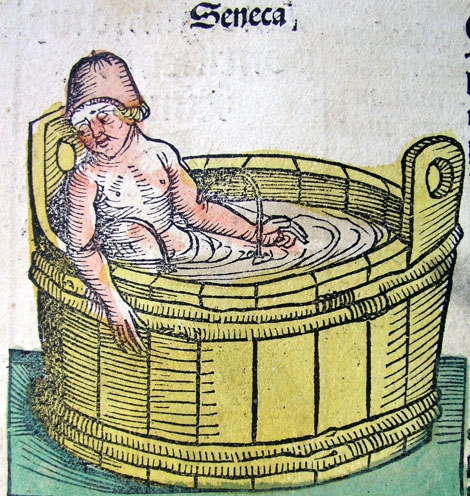The suicide of Seneca or the fatal bath
For some, the bath has also been a scene of drama. The philosopher Seneca was tutor and later advisor to Nero when he became Emperor in 54 AD. But Nero, "whose monstrousness was beyond all complaint", Tacitus tells us, began to hate his former master, tried to poison him and eventually ordered him to commit suicide in 65.
"Seneca meantime, as the tedious process of death still lingered on, begged Statius Annaeus, whom he had long esteemed for his faithful friendship and medical skill, to produce a poison with which he had some time before provided himself, same drug which extinguished the life of those who were condemned by a public sentence of the people of Athens. It was brought to him and he drank it in vain, chilled as he was throughout his limbs, and his frame closed against the efficacy of the poison. At last he entered a pool of heated water, from which he sprinkled the nearest of his slaves, adding the exclamation, "I offer this liquid as a libation to Jupiter the Deliverer." He was then carried into a bath, with the steam of which he was suffocated, and he was burnt without any of the usual funeral rites. So he had directed in a codicil of his will, when even in the height of his wealth and power he was thinking of his life's close."
(extract from the Annals of Tacitus)
Seneca killed himself by slashing his wrists and the backs of his knees while sitting in a warm bath to speed up the fatal hemorrhaging.






















